Tour de France officials are messing with the race’s golden goose with Sunday’s high-risk circuit up and over Montmartre.
Sure, the optics will be stunning and the racing could be interesting (but I kind of doubt it).
I get the argument: Every stage should be a chance to race and win. Any stage should have its dimension of tactics, wits, and watts.
So why should the final stage of the world’s hardest race be reduced to what some see as a two-hour photo opportunity and a 10-lap kermesse?
Why? Because the traditional closing-day romp down the world’s most glamorous boulevard is one of sport’s most iconic and dramatic finales.
The Champs-Élysées dash is often called the unofficial world championships of sprinting. And now ASO has taken that away (at least for this year).
Let’s hope this is a one-off detour. The Tour de France deserves its Champs-Élysées sendoff.
Giving the sprinters their due
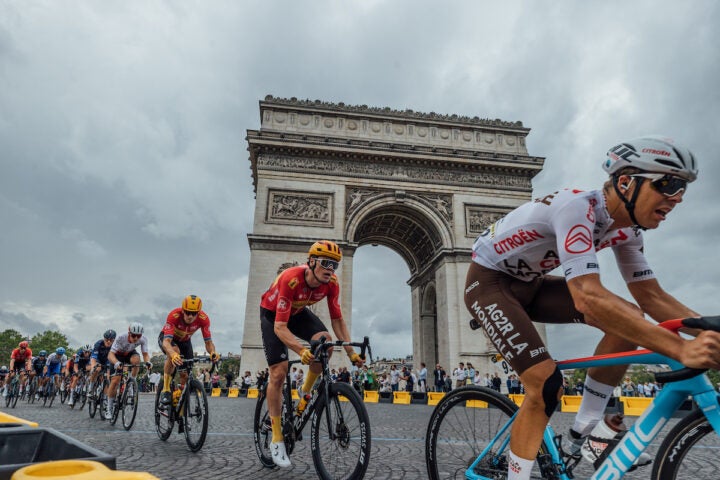
Some people just hate bunch sprints. And it’s impossible to change a hater’s mind, but there’s plenty to admire in the raw wattage, the high-risk run-ins, and the precision of a perfectly timed leadout.
Sprinting is a dying art in modern cycling. Race organizers — under pressure from start-to-finish live streams and fans’ ever-shrinking attention spans — are cramming every stage with climbs and chaos.
Instead of flat point-to-point stages on big, wide roads just to cover ground between the Pyrénées and the Alps, today’s Tour profiles look like a crumpled map across France’s backroads.
Nearly every Tour de France stage includes a fistful of rated climbs and punchy uphill sprints that have turned what used to be a procession between the mountains into a full-on, watt-rockets every stage of the Tour.
And that’s a good thing.
This will be the 5th consecutive year that Tadej Pogacar and Jonas Vingegaard occupy the first and second step of the Tour de France podium
Tadej Pogacar 3-2 Jonas Vingegaard pic.twitter.com/G6i2fke35r
— Cycling on TNT Sports (@cyclingontnt) July 26, 2025
The downside is that the pure sprinters are being squeezed out.
Sprinters today not only need to trudge over the Alps and Pyrénées, they also have to pack the rocket fuel to survive a Cat. 2 climb just 15km from the finish.
An entire generation of sprinters was wiped out — including the likes of Marcel Kittel and Tyler Farrar — because they simply couldn’t climb fast enough to hang on to the bunch to reach the finish line.
It’s a huge testament to sprinters as big and bulky as Jonathan Milan and Tim Merlier who have evolved to survive a modern Tour’s ripsaw profile to be there to dispute the few stages that truly suit them.
Why not give them their day in the Parisian sun?
Why mess with what works?
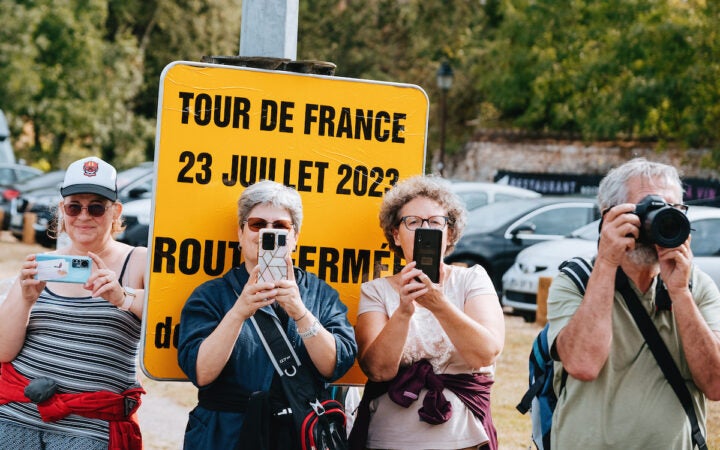
The Champs-Élysées curtain call is a Tour de France postcard.
The wide boulevard — part of a 19th-century urban renewal that helped reshape Paris into the world icon that it is — is perhaps the best finish to any bike race in the world.
And the Tour de France is messing with that.
Last year, the Tour was shunted aside to make room for the security bubble surrounding the Paris Olympics and was forced to end the Tour in Nice with a time trial, the first in Tour history that the race didn’t finish in or around Paris.
The Champs-Élysées has been the Tour’s final stage since 1975. For its 50th anniversary this weekend, ASO wanted something “special.”
I love ASO’s flair for spectacle. No other organizer blends France’s stunning geography and cycling’s mythology quite like they do.
This rewiring of the Champs finale is too much.
Montmartre could backfire
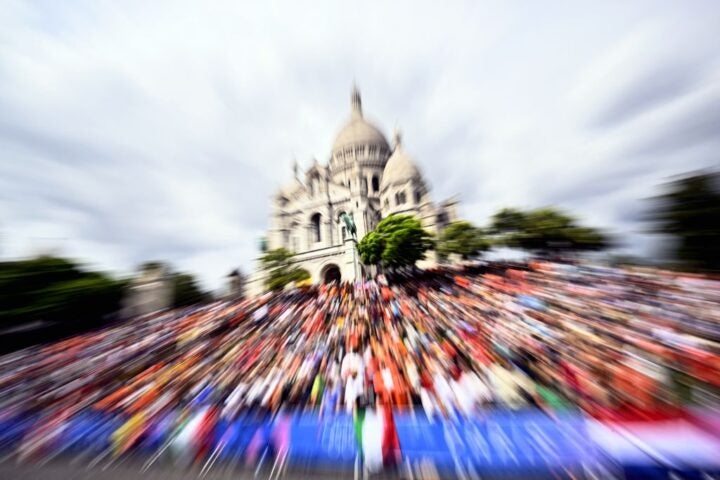
Today’s Montmartre circuit could deliver some exciting attacks and might even see the GC riders dragged into the fray (or at least being forced to chase).
Every stage should count, I get it, but nearly everyone I talked to in the peloton is against the Montmartre circuit. Too dangerous, too gratuitous, riders say.
Others argue why waste a Tour stage with a parade and a sprint? I get that, too, but that’s a wrong-headed idea on a few counts.
First off, I don’t buy the argument that sprint stages are boring. These are the fastest riders on Earth, barreling toward the line with unfiltered ambition and zero margin for error.
How can that be dull? Just watch the Velon in-race videos to open your mind.
Terre de vélo et partenaire fidèle du Tour de France, les Yvelines accueillent son ultime étape, au départ de Mantes-la-Ville et à destination de Paris et des Champs-Elysées. Ferveur populaire et exploits cyclistes se conjuguent pour honorer ce rendez-vous sportif international. pic.twitter.com/ZskePhTZt7
— Pierre Bédier (@pierre_bedier) July 27, 2025
Having four to six stages well-suited for sprinters is the perfect balance. And no sprint is ever guaranteed, especially after the first week.
That tug-of-war between baroudeurs and sprint trains is an essential part of the Tour narrative
And what’s more boring than sprint stages? Time trials, so at least we’re not facing that today.
Of all the issues and troubles that pro cycling is facing, the Champs-Élysées finale is one of the things that doesn’t need fixing.
Don’t diss sprinters
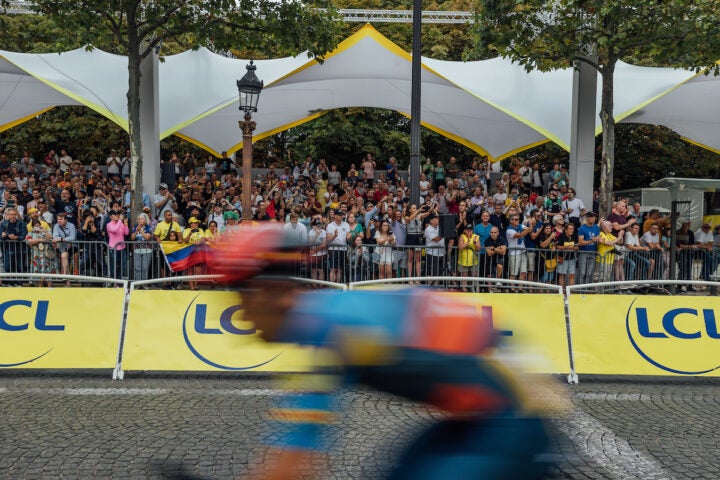
Another argument against sprints is that the fast gallop finales discount the rest of the bunch, but that’s not true.
In fact, sprint stages often favor more teams and more potential winners than almost any type of stage across the Tour’s three weeks.
The last winner down the Champs? Jordi Meeus in 2023. Not many tipped him to win that day.
No single stage profile is ever going to favor the entire peloton. Unless your name is Tadej Pogačar, most riders have only a handful of stages when they truly have a shot at victory.
Sprinters grind their way over the Alps in the grupetto just to reach the handful of finishes made for them. And the pure climbers spend 19 days tucked in the bunch waiting for their two shots at high-altitude glory.
That’s just how grand tours work.
Sunday’s Montmartre might deliver fireworks similar to what we saw in the Olympics last summer, but how many riders will it truly favor?
Mathieu van der Poel is out. Wout van Aert is gassed. Olympic double gold medalist Remco Evenepoel, who won on a course here last summer, isn’t even in the Tour.
The peloton size today is more than double what it was during the Olympics, so nerves and tension will be high.
No one wants to see three weeks of suffering torpedoed by a final-day crash on a tight, urban circuit littered with traffic furniture.
Sure, there can be crashes on the Champs sprint too, but everyone I spoke to about Sunday’s stage agreed that the Montmartre circuit is potentially much more dangerous.
The time gaps are too big to make the final stage count for the GC, so I’d be very surprised to see any reckless moves or major GC attacks.
Montmartre isn’t that hard of a climb, and though there might be a few exciting moments for the highlight reel, I doubt it will repeat the drama of last year’s Olympic race when the action was reduced to a mano-a-mano street fight.
No team is going to let that happen today.
Champs-Élysées finale is sacred
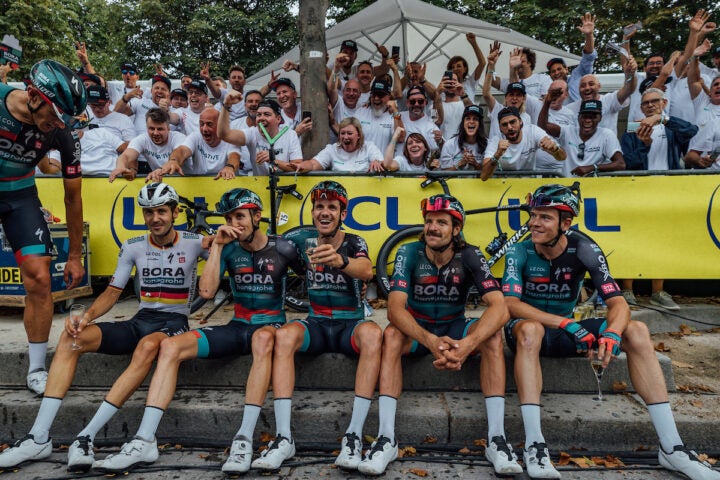
And there’s the tradition.
The Champs-Élysées finale is the global block party and rite of passage for the Tour de France.
There’s something special and unique about the entire stage. The three-week Tour is a pressure-cooker from start to finish, and even this year, the otherwise impermeable Pogačar was showing signs of cracking from the strain.
Every stage is a war, every pedal stroke is one second from disaster.
After leaving the Alps or Pyrénéees — depending on which direction the big loop turns — the pressure is lifted and everyone looks to Paris for salvation, redemption, and celebration (not to mention a cold beer).
The peloton loves to end the Tour de France with the final romp into Paris. The first hours of the stage are a chance to celebrate, to rejoice, to bury the hatchet, and to appreciate what a rare privilege it is to race bikes for a living.
Etapa 2⃣1⃣
Mantes la Ville
Paris Champs-Elysées
132,3 km
⏰ 16:10 CEST > 19:35 CESTDescubre el recorrido en 3D.
+ Info ➡ https://t.co/ypdDCs6YFF#TDF2025 pic.twitter.com/PRoaPWGpKV
— Tour de France ES (@letour_es) July 27, 2025
And whoever says the final stage isn’t real racing has never seen it in person or ridden on the Champs pavé.
OK, it’s not the Carrefour de l’Arbre, but it’s no golf cart path, either.
And there’s no rule that it ends in a sprint. Every July, riders gamble from the breakaway and sometimes they win.
The hijinks and relaxed vibe, and final-day pageantry and sense of history will disappear this year.
It’s the Tour that decides course design each year, but let’s hope that this is a one-off departure from tradition.
There’s even talk of neutralizing the GC time once they hit the final Montmartre circuit, so why even bother?
And then there’s a chance that a sprinter could win anyway.
Let’s bring back the drag race down the Champs.
